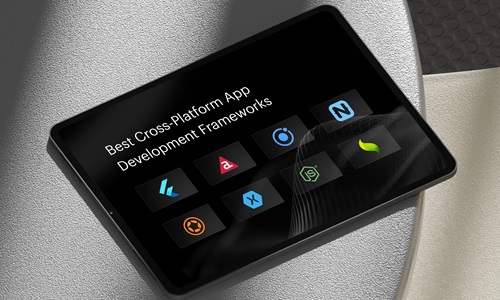Multiplatform App Development: Creating Seamless Digital Experiences
The growing demand for seamless digital experiences across multiple devices has made multiplatform app development a key focus in the tech industry. Businesses and developers aim to build applications that work efficiently across various operating systems without requiring separate codebases for each. This approach not only saves time and resources but also ensures a consistent user experience regardless of the device being used. Several companies specialize in multiplatform development, offering tools and frameworks to streamline the process. Among these are UXDivers, Ionic, Flutter, Xamarin, and React Native, each contributing to the evolution of cross-platform app development.
UXDivers is a company dedicated to crafting high-quality user interfaces for cross-platform applications. Their expertise lies in helping developers create visually appealing and highly functional mobile apps using frameworks like .NET MAUI. One of their standout products is Grial UI Kit, which provides pre-built templates and UI components to simplify the development process. By focusing on UX design and user-friendly interfaces, UXDivers enables businesses to deliver apps that feel native on multiple platforms. Their approach bridges the gap between aesthetics and functionality, ensuring that users have an engaging experience regardless of the device they use. Learn more.

Ionic is another leading multiplatform development framework known for its flexibility and ease of use. Built on web technologies such as HTML, CSS, and JavaScript, Ionic allows developers to create apps that run seamlessly on both iOS and Android. One of its advantages is the ability to use a single codebase, which significantly reduces development time and maintenance costs. Ionic’s integration with popular front-end frameworks like Angular and React makes it a preferred choice for developers familiar with web development. The framework also provides a vast library of pre-designed UI components, making it easier to build visually consistent applications without starting from scratch.
Flutter, developed by Google, has gained significant popularity in recent years due to its powerful performance and beautiful UI capabilities. Unlike traditional cross-platform frameworks that rely on web technologies, Flutter uses its own rendering engine, allowing for smooth animations and highly customized designs. Developers appreciate Flutter’s “hot reload” feature, which enables real-time updates during development without restarting the entire application. By using the Dart programming language, Flutter provides a highly efficient way to build multiplatform apps with a native-like feel. Its growing ecosystem and active community support make it a strong contender in the cross-platform development space.
Xamarin, owned by Microsoft, is another robust solution for developing multiplatform applications. It allows developers to write code in C# and share a significant portion of it across iOS, Android, and Windows applications. Xamarin uses native APIs, ensuring that apps deliver performance comparable to native development. One of its key advantages is deep integration with Microsoft’s ecosystem, making it an attractive choice for businesses already using Azure, Visual Studio, or other Microsoft tools. Xamarin.Forms, a component of the framework, simplifies UI development by enabling a single user interface to be shared across platforms while still allowing customization when needed.
React Native, created by Facebook, is widely used for building multiplatform applications due to its efficiency and ability to deliver near-native performance. Using JavaScript and React, developers can build mobile applications with reusable components that function smoothly across different platforms. One of React Native’s strengths is its extensive third-party library support, allowing developers to enhance app functionality quickly. Additionally, React Native’s “fast refresh” feature helps speed up development by instantly reflecting code changes. Many large companies, including Instagram and Airbnb, have adopted React Native for its scalability and cost-effectiveness.
Multiplatform app development offers numerous advantages for businesses looking to expand their digital presence. Instead of developing separate applications for each operating system, companies can save time and resources by using a single codebase while maintaining high performance and usability. This approach also simplifies updates and maintenance, as changes only need to be made once rather than for each platform separately. Additionally, multiplatform development enables faster time-to-market, allowing businesses to reach users across different devices without unnecessary delays.
Despite its many benefits, multiplatform development comes with challenges. Performance optimization is one of the main concerns, as apps must run smoothly on different devices and operating systems without compromising speed. Some frameworks handle this better than others, but achieving near-native performance can still require additional effort.